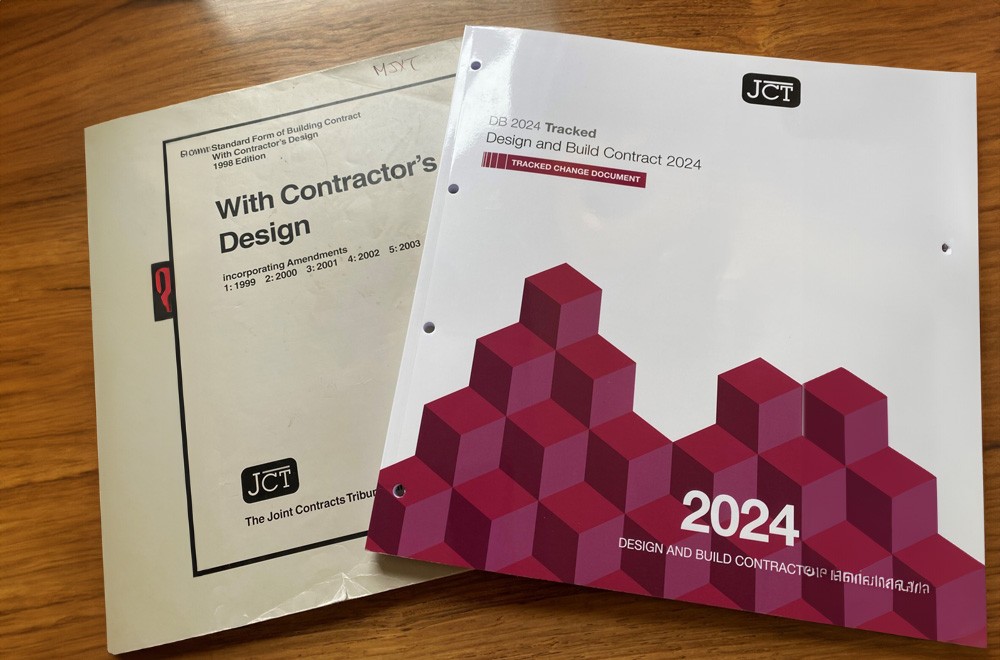JCT D&B 2024 – a brave new world?
The new JCT D&B 2024 has been published. The first JCT I ever had to advise on was the JCT 1998 “With Contractor’s Design“ (a pre-cursor to the design and build contract for the benefit of youngers readers) so I have seen a few iterations… This is always an exciting moment for a construction lawyer as we race to work out what has changed and update our templates. For the industry, the layout and terminology used in the JCT is so familiar, rather like a comfortable pair of shoes or a trusted friend, that any changes tend to be treated with an element of trepidation and uptake of the new forms can be slow.
The JCT have said that the changes do not impact on risk allocation. I beg to differ. Here are my top 5 points to note:
- New aggregate liability cap - there is an optional aggregate cap on the contractor’s total liability – this, I stress, is optional but its inclusion, albeit in the JCT D&B Guide rather than in the booklet itself, is a major shift and may be resisted by employers and their lenders. The JCT has included a basic list of carve outs (i.e. matters in respect of which liability is not capped, and which do not count towards the cap) which will need to be just as carefully considered and negotiated project by project as the amount of the cap, an often-neglected area. How any aggregate cap interacts with any negotiated LAD cap or the more market-normal 'consequential loss' design negligence cap (the familiar “clause 2.17.3” cap) will also need very careful thought.
- New Relevant Events - there are some new delay Relevant Events, notably for “epidemics”. This is not controversial, as anyone who has had to free draft around Covid will know (but the definition may need some refinement…) but what is off-market in my view is its inclusion (optional) as a Relevant Matter, i.e. something which gives the contractor the right to claim additional money as well as time. That does not reflect market practice for “neutral“ events such as an epidemic, extreme weather etc, where the risk is usually shared (i.e. contractors get relief from LADs via extensions of time but not any additional cost).
- Enhanced Good Faith provisions - there are enhanced obligations on the parties to act in “good faith” and in a collaborative, respectful manner. This is obviously laudable in terms of driving behaviours (if only all projects were like that!) but opens up a bit of a minefield in terms of interpretation under English law. In my view the best contracts are firmly negotiated and set out a clear and fair risk allocation – this sort of language just muddies the waters.
- New “Stats” terminology - Statutory Undertakers are now to be called Statutory Providers and the description updated to remove the reference to local authorities – these may seem like small changes, but we will all need to get used to this new terminology and definition around “Stats” which has been in the JCT for many years.
- Quicker Extension of Time decisions - the period for an Employer to notify on an EoT decision is reduced from 12 to 8 weeks – this reflects best practice and is to be welcomed, provided that contractors play ball in terms of the necessary back up evidence of course to make this timeframe workable. However it may be a little tight on projects with external finance given the need to involve the bank’s monitor as part of the process.
So what is missing?
Well, I was hoping that the JCT might do more in terms of shaping the market with actual drafting around the various complex requirements for Higher Risk Buildings under the Building Safety Act, such as the Gateways, the 15 year Limitation Period and the Golden Thread (but there are some helpful footnotes/guidance) - looks like we will still have to get our drafting pens out when advising on these complex assets ! There are however useful provisions around the new Building Regulation Duty Holders regime which will help to clear up the current market confusion about having to appoint a Principal Designer/Principal Contractor in the context of both CDM and Building Regulations.
The JCT insurance clauses, always a challenge to adapt to the realities of modern insurance policies on complex projects, particularly when not new build, remain heavily footnoted and hard to interpret in my view. With the trend towards more “brown to green” refurbishments, the insurance situation is particularly complex to draft and will still need very careful consideration project by project.
On a brighter note, the JCT have gone gender neutral, moved the environmental sustainability provision into the main body and have included provisions for email notices, each a step forward to be welcomed.
So overall, I would say that JCT D&B 2024 is not so much of a “brave new world” but rather a mixed bag from a developer’s perspective: generally more contractor friendly (particularly if the optional provisions are used) and with some missed opportunities to lead the market around Higher Risk Buildings drafting, but also with some positive new features that bring it up to date with market practice and the law.
These are my thoughts and opinions, but what are yours? We will be running training workshops for clients and contacts, and I am looking forward to some lively debate!
We in the Clifford Chance Construction Group are producing a more fulsome note on the changes (the devil is in the detail as always) and will report back on how the market reacts over the coming months, so watch this space.


